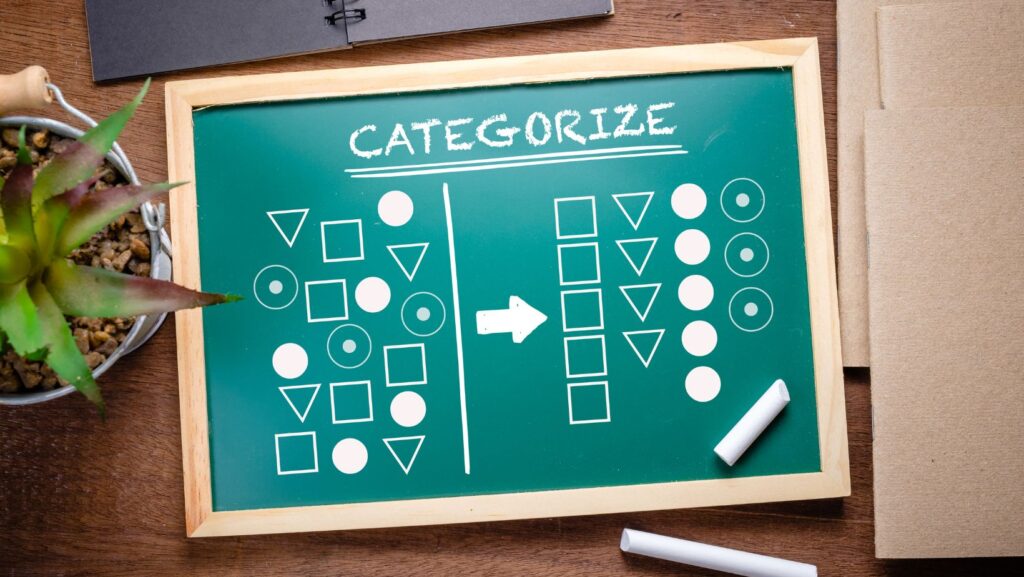Explain the Three Ways of Organizing Concepts.
When it comes to organizing concepts, there are three key methods that can help you make sense of complex ideas. These methods provide structure and clarity, allowing you to effectively communicate your thoughts and understand the relationships between different concepts. Whether you are working on a research project, writing an essay, or simply trying to organize your thoughts, understanding these three ways of organizing concepts is essential.
The first method of organizing concepts is categorization. This involves grouping similar concepts together based on their shared characteristics or properties. By categorizing concepts, you can create a clear and logical structure that helps you see the bigger picture and identify patterns or trends. Categorization provides a framework for understanding complex ideas and simplifies the process of organizing and retrieving information.
Another method of organizing concepts is hierarchy. This involves organizing concepts in a hierarchical structure, with broader, more general concepts at the top and narrower, more specific concepts below. Hierarchy allows you to break down complex ideas into smaller, more manageable parts, making it easier to understand and navigate through the information. It provides a clear framework for organizing concepts based on their level of importance or specificity.
The third method of organizing concepts is chronology. This involves arranging concepts in a sequential order based on time or a specific timeline. Chronology is particularly useful when dealing with historical events, processes, or any concept that has a clear temporal progression. By organizing concepts in chronological order, you can effectively convey the development or evolution of ideas and highlight the cause-and-effect relationships between different concepts. Chronology provides a structured framework that helps you understand the timeline and context of concepts.
Why is Concept Organization Important?
Concept organization is a crucial aspect of effective communication and understanding. By organizing concepts in a logical and structured manner, we can enhance clarity and facilitate comprehension. Here are a few reasons why concept organization is important:
- Enhances Understanding: When concepts are organized, it becomes easier for readers or listeners to grasp the main ideas and their connections. By presenting information in an organized manner, we can help our audience comprehend complex concepts more effectively.
- Facilitates Retention: Organized concepts are more likely to be remembered. By presenting information in a structured way, we help our audience retain key ideas and concepts. This is particularly important when dealing with large amounts of information or when trying to convey complex ideas.
- Improves Communication: Concept organization allows us to present information in a clear and coherent manner. By organizing concepts logically, we can guide our audience through the information and ensure that they understand the intended message.
Three Ways of Organizing Concepts
Alphabetical Order
One of the ways to organize concepts is through alphabetical order. This method arranges information in a logical sequence based on the letters of the alphabet. By organizing concepts alphabetically, it becomes easier for the audience to locate specific information quickly and efficiently.
Hierarchical Order
Another effective way to organize concepts is through hierarchical order. This method involves categorizing information based on levels of importance or significance. The concepts are organized in a hierarchical structure, with broader categories at the top and more specific subcategories beneath them. This organization helps to establish a clear and logical flow of information, allowing the audience to understand the relationship between different concepts and their subcategories.
Categorical Order
Categorical order is a method of organizing concepts based on specific categories or groups. This approach involves grouping related concepts together under specific headings or categories. By organizing concepts categorically, it becomes easier for the audience to identify common themes or similarities between different concepts. This organization also helps to create a cohesive and structured presentation of information, making it easier for the audience to comprehend and retain the key ideas.
Organizing concepts is crucial for effective communication and understanding. By utilizing different methods of organization such as alphabetical order, hierarchical order, and categorical order, we can enhance comprehension, facilitate retention, and improve overall communication. Each method of organization serves a unique purpose and can be used depending on the specific context and requirements of the information being presented. So, whether you’re creating a presentation, writing an article, or delivering a speech, remember the importance of organizing concepts to ensure your audience grasps and remembers the key ideas effectively.


